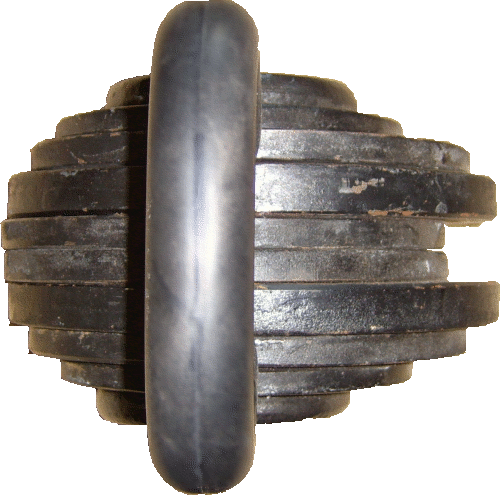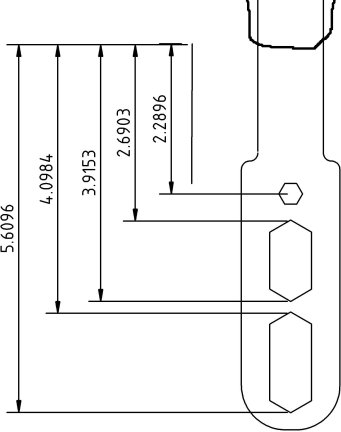 Kettlestacks were designed with standard (1" ID hole) plates in mind, but they work really well with metric plates and Olympic (2" ID hole) plates if you tweak the shape by shifting the plates.
Kettlestacks were designed with standard (1" ID hole) plates in mind, but they work really well with metric plates and Olympic (2" ID hole) plates if you tweak the shape by shifting the plates.
Here are some points to go over with OLY plates & Kettlestacks: 1. Since we are considering plates of 10lbs or less, Some OLY plates have much wider rims than STD plates, so they won't stack as compactly as standard plates. 2. One of the attractions of a kettlebell/stack is how compact the weight is; If you want to go over 60 lbs, you'll eventually have to buy some cheap 10lb "pancake" plates or use the 10lb OLY plates that have a less pronounced rim. - In fact the thin rim 10lb OLY plates make the best looking 90lbers. 3. OLY plates __sometimes have squarer edges than STD plates; For comfort on cleans, this makes it doubly important that you arrange the plates for a proper transition. There is no requirement that the plates line up concentrically- shift them radially for your comfort. (see pic). 4. OLY plates have 2" holes instead of 1" holes, so you still need at least one STD (1.25,2.5 or 5 lb) plate on EACH outside wing to prevent the bolts&washers from slipping through the larger OLY holes. We strongly suggest that you "invest" in at least two pairs of STD (1.25&2.5 or 2.5&5) lb plates to ensure a gradual end taper for comfortable shoulder cleans. 5. The assembly page shows a setup trick with a metal bowl that works great with OLY plates. 6. With OLY Plates there will be more play between the rims and the axle (this helps get the setup you want), so please keep everything tight. especially if you're using OLY plates with the pronounced rims.
 Here is a diagram of the band dimensions, so you can measure your own plates and see how they will work with the Kettlestack. We designed the support straps to handle the sports authority 10lb plates , which are the largest diameter standard plates we know of. Don't forget to include the wiggle room between the ID of the plate and the .64" (WAF = width across flats) hex axle. Also, the interference between the plates and the handle only involves the plates that directly touch the support straps. Thank you Kettlestack
Here is a diagram of the band dimensions, so you can measure your own plates and see how they will work with the Kettlestack. We designed the support straps to handle the sports authority 10lb plates , which are the largest diameter standard plates we know of. Don't forget to include the wiggle room between the ID of the plate and the .64" (WAF = width across flats) hex axle. Also, the interference between the plates and the handle only involves the plates that directly touch the support straps. Thank you Kettlestack